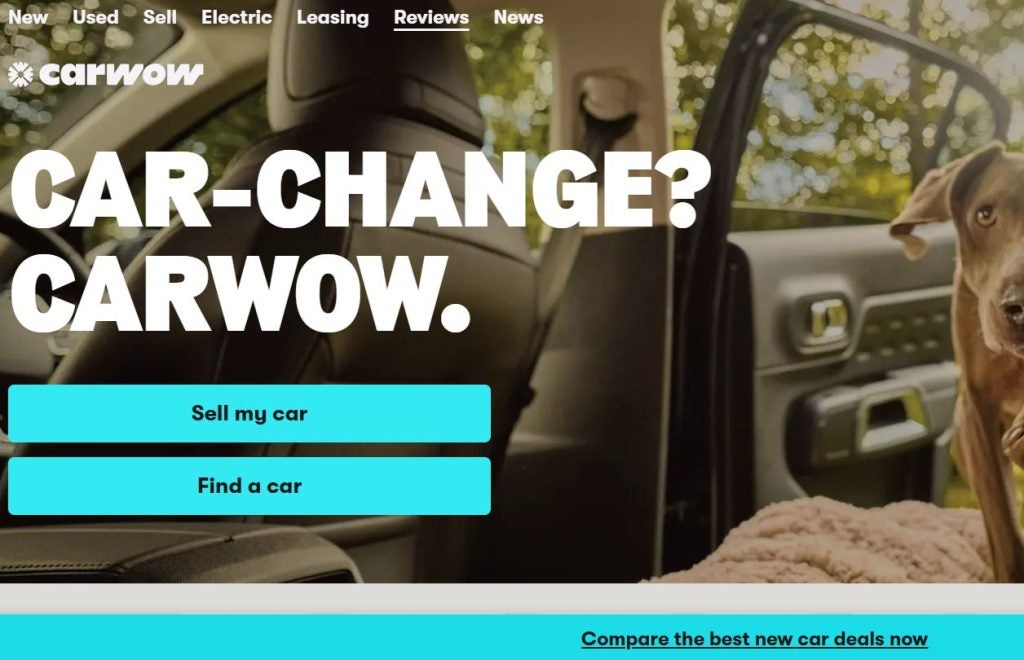As more people look to their home country as a holiday destination, leisure vehicle finance is gaining prominence. Chris Farnell takes a look at the sector’s unique challenges and opportunities.
Whatever your take on the UK’s relationship with the EU, one effect – directly or indirectly – has already become visible: more British people are spending their summer holidays in the UK.
“I think Brexit, overall, has created some uncertainty, but I don’t necessarily think it’s linked to people not wanting to travel abroad or into Europe,” says What Credit director Dave Alabaster. “Maybe it’s more related to keeping the purse strings a little tighter while there’s uncertainty.”
Whatever the reason, as more people turn to the UK for their holiday plans, we are also seeing growth in the caravan, motorhome and leisure vehicle sectors.
“If someone has a caravan, their holiday is sorted every year. In that kind of market sector, that tends to be what they’re doing it for,” Alabaster remarks.
“They want to be able to get away for weekends and holidays. It’s replacing their two weeks in Spain, and they’re paying for it on a monthly basis.”

US Tariffs are shifting - will you react or anticipate?
Don’t let policy changes catch you off guard. Stay proactive with real-time data and expert analysis.
By GlobalDataThe trend has also been given a boost by the exceptionally hot summer the UK saw last year, meaning more tourists are realising that you do not have to head to the Med to soak up the sun. But when demand increases, the market responds in kind.
“The number of holidaymakers is increasing and, as a result, the cost of staying in a park is going up as well,” observes Matthew Edwards, managing director at Auto Finance Online.
“In terms of the touring side of things, site fees have gone up. Storage is also a big thing for some people and must be taken into account. For the larger family-size caravans, you have to make sure that when you go to buy it that you know where you’re going to store it.”
Billing Finance director Oliver Mackaness has similarly noticed the trend, and believes it will continue. “I think it will only improve as more people are holidaying in the UK,” he notes.
Another factor in the growth of the leisure vehicle market sector is the appealing rates it offers. Prime rates can begin at 5.9% APR, meaning there are really good deals on motorhomes and caravans.
The near-prime non-prime market also offers competitive possibilities, giving families with subprime credit the ability to make sure their family gets a holiday every year at an affordable cost.
Happy Campers
While families are a growing part of the market, the typical make-up of the leisure vehicle finance market is closer to that of motorbike finance. It is a want, not a need, and so tends to attract older customers with good credit.
“They tend to be a little bit more in the retired market. It’s a bit more of a lifestyle purchase as opposed to a necessity,” Alabaster says.
“Our customer’s average age is 52 or 53 years,” Edwards agrees.
Mackaness also confirms: “I think they attract more prime customers – after all, these are more luxury items. They are generally more expensive than the typical Billing asset, and therefore customers are more keen to have them over a longer period. As the assets are not particularly prime, customers should not always expect prime rates of finance.”
Indeed, Alabaster notes that the new customers in this sector often do not necessarily have a firm grasp of what is affordable, making the job one of managing customer expectations and making sure they can afford what they are looking to purchase.
“It tends to be a lifestyle choice. You’ve got your new caravaners, but it predominantly tends to be people already in the sector,” he says, adding that buyers tend to fall into two main categories.
“You have customers who are more affluent or they’re reaching their 50s or 60s, moving towards retirement, looking for a getaway and a slowdown, and we also tend to have your family of four or five, where it becomes their main holiday each year,” he says. “They’re the two biggest demographics.”
Edwards agrees that the family side of the sector is growing, but still primarily sees the older, prime customers making up most of the market.
“We get more of those families applying online trying to get finance first, probably doing the same thing they did to purchase their car by googling ‘caravan finance’ and going with the first site they see,” he says.
“We get a lot, but it’s not growing as fast as we’d like. However, five or 10 years down the line we’ll expect to see that growing. For now, the average age is still 52 or 53 years old. More of those younger families are staying in the UK, but we haven’t seen a huge change in the age of customers.”
Assessing Value
While the market is stable and growing with a typically high quality of customer, the caravans and leisure vehicles sector still brings some unique challenges with it.
“We have been financing caravans for a long time and the market has been steady,” Mackaness says. “However, I believe some lenders are more wary of the assets. They are difficult to value as there are potentially lots of add-ons.”
Mackaness notes, however, that these are assets that generally hold their values well.
It is a challenge that Edwards moved into the market to address two years ago, after talking to business partners and discovering there was a real need for products that served that sector.
“I got into it March last year, and I realised quickly it wasn’t as easy as I thought it would be,” Edwards admits. “The way these vehicles are in terms of how people value them is very complex.”
The challenge comes from the tendency dealers have to add their own bonus features to caravans as selling points.
“The reason they’re hard is that they all have specials. Spinney Garage, they will do a Swift Challenger, but they all put their own special additions on it,” Edwards explains.
“They’ll add a Vogue pack which will add around £4,000 in value to it, and every big dealership has their own special addition. So when a lender sees a Swift Challenger come through for £20,000 and their book price says £15,000, we have an issue taking it.”
Auto Finance Online, working with 10 of the top dealerships that had all faced this problem, realised there was a big market for a financial product that could handle these differences.
“We’ve created the same model that Zuto had,” Edwards explains. “It was hard to replicate at the beginning, but we’ve got it down to a T. It makes it easy to say to, for instance, Paragon: ‘You can lend to us for that caravan at that price.’”
A Long-Term Investment
The differences between leisure vehicle finance and the rest of the motor finance sector go beyond the challenges around pricing, however. The sorts of deals that get arranged would send financiers in car finance white. The terms are longer and the balances higher than a lender would expect to see in other finance markets.
“Our average balance is around a £25,000 loan over a seven- or eight-year term at around 7.9% APR,” Edwards tells Motor Finance.
Alabaster adds: “There’s now more recognition by the finance industry that the leisure sector is a longer-term commitment rather than a quick fix, so we can do 10-year terms. We’ve had some motorhomes with terms of up to 20 years, which you’ll never get on a car.”
“The majority of our payment terms are over periods of seven or eight years on average. People like to hear that if you borrow £50,000 it’ll cost you £250 a month and they have every intention of keeping it for a long time,” Edwards says. “Caravans and leisure vehicles hold their value, so people don’t mind taking it over a long term.”
Part of the reason for this is that a caravan or motorhome will hold its value in a way that most cars, or even bikes, simply cannot.
“No one’s going to finance a 17-year-old car,” Alabaster says. “But they will for a caravan.”
These terms have a knock-on effect that separates the market still further from mainstream motor finance. While car finance has seen a huge growth in PCP and lease-style deals, and other motor finance sectors have started to follow suit, the same is not true of the leisure vehicle sector.
“Black Horse brought out a product in 2017, and my understanding is that take-up was lower than they expected,” Edwards says.
“You can do a 10-year loan, keep the payments down and it’s yours at the end,” Alabaster says simply. “The longer terms do away with the need for PCP. You’ve a 10-year term and you can sell at any time during that agreement. It’s really straight repayment finance, being able to offer some quite low competitive rates with the 10-year term.”
Edwards believes there will eventually be a need for these kinds of product, however, even if it does not appeal to the demographics that make up the current market.
“If I was going to get one in five or 10 years, I’d want a product like that, but in that age demographic they just want to know what the monthly payments are,” Edwards says. “We are in discussions with one lender about bringing out our own product. We think it’s something more people are going to ask for.”
The challenge, Edwards says, comes back to the issue with valuations. Black Horse has huge reserves of data on which it can draw to build models that allow it to value caravans. However, if you can negotiate those issues, the sector is an appealing one for lenders.
“People can afford to take a £50,000 loan because it’s 7.9% APR as opposed to 10% or 11%, and the lenders like it as well,” Edwards says. “Customers look after these vehicles and default levels are low. A lot of lenders are trying to get into it, but get scared by the long payment terms.”
Static Shock
Another sector of the market that is more controversial is static caravans. Mackaness is cautiously optimistic about the sector, telling Motor Finance: “We are considering entering the static caravan market, but a buy-back agreement with the park owner is essential, so you agree buy-back amounts and have access to your assets.”
However, others in the market are far more sceptical. Alabaster points out: “We cannot really get statics financed because they’re tied into the parks. If a customer is unable to make payments and their asset gets repossessed, you can’t just turn up and repossess it.”
Edwards adds: “The problem with those, you know, is that a lodge at the Warren Bay Holiday Village will cost £300,000 plus, but the lodge you’re buying there would cost £70,000-100,000 down the road, however it’s the park that owns the land.”
“So with the lenders, a lot of people pull out because of the rights parks have. Some parks might even have clauses where you have to upgrade after a certain number of years. You have to have an agreement with the park itself, so lenders want a guarantee on the buy-back for that vehicle where the park will buy it back at a certain price, but then the parks get nervous about it.”
As well as issues with repossession, customers will often find static caravans come with hidden costs.
“What tends to hurt people is everyone forgets about the ground rent they get free for the first year,” Alabaster says. “So they pay between £3,000 and £5,000 a year in ground rates. It’s harder in the longer term; then when they don’t pay, repossession is tough.”
Edwards adds: “And if you move the caravan, that’s a £3,000 fee.”
Family Business
Across the leisure vehicle finance sector, however, the mood is an optimistic one, especially with the expected growth in younger and more family-orientated buyers.
“I’m banking on it being a growth sector,” Alabaster says. “I think a certain amount depends on the UK weather.”
“Our aim is to get more families,” Edwards says. “We foresee big growth in terms of what the manufacturers are doing, bringing out younger-looking models with alloy wheels and silver finishes. You don’t want a plain old white thing: you want silver with blacked-out windows and stuff like that.”
Aside from potential growth in the sector, Edwards says the sector is also unique for the atmosphere among the dealers.
“The big difference is the dealerships all get on so well,” he says. “You’ve got the top 10 dealers all getting on in one room. They’re all so spread out so they don’t compete with each other, which means it’s great for us because we can sign up some huge dealerships.”







